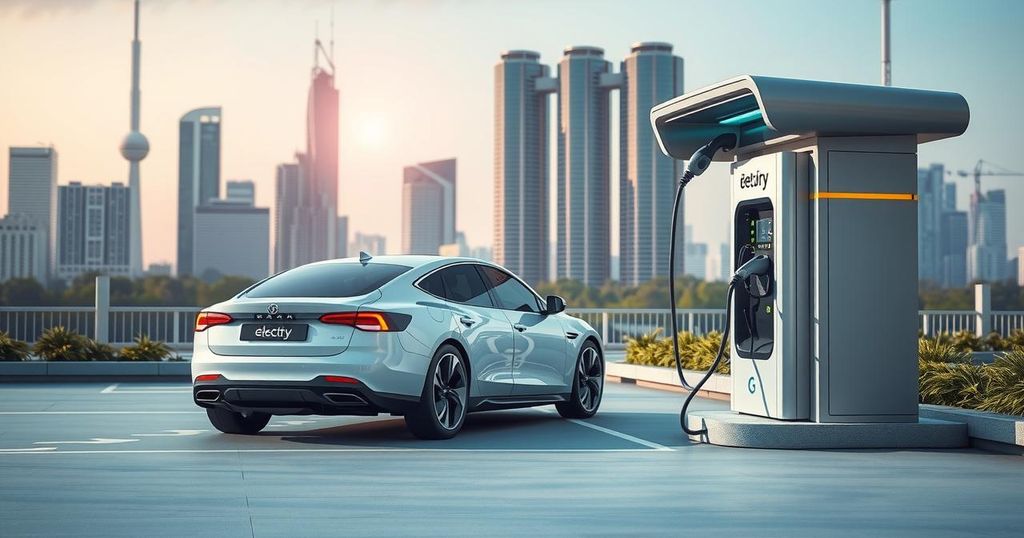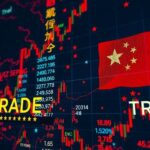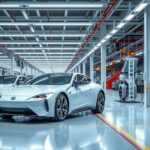Economy
Politics
ASIA, AUTOMOTIVE, AUTOMOTIVE INDUSTRY, BYD, CHINA, DONALD TRUMP, ENERGY, EUGENE HOSHIKO, INVESTMENTS, JAPAN, JINSHAN, LEXUS, MATT ROURKE, MEXICO, NORTH AMERICA, NORTH CAROLINA, PHILADELPHIA, SHANGHAI, STOCK MARKET, TESLA, TOKYO, TOYOTA, U. S, UNITED STATES, YO, YOICHI MIYAZAKI
Sophia Klein
Toyota Accelerates EV Production and Battery Manufacturing in China and U.S.
Toyota has initiated a significant expansion into the EV market, launching production in China and a new battery facility in North Carolina. The moves come as the company reports a 61% profit increase this fiscal year, despite past production challenges. Additionally, the company’s goal is to meet local demands and contribute to carbon neutrality efforts.
Toyota Motor Corporation has announced its commitment to the electric vehicle (EV) market by establishing production and battery manufacturing partnerships in both China and the United States. The automaker revealed plans to launch a new factory in the Jinshan district of Shanghai, capable of producing 100,000 vehicles annually, with the production of new Lexus EVs expected to commence in 2027. Concurrently, Toyota is investing $14 billion in a battery manufacturing facility in North Carolina, aiming to begin shipping batteries for various models by April.
Toyota’s increased focus on electric vehicles comes in response to competitive pressures from companies such as Tesla and BYD, particularly given the booming demand for EVs in China. The company’s strategic moves also align with global sustainability goals amidst rising concerns regarding environmental impacts. The expansion is anticipated to create approximately 1,000 new jobs in China and around 5,000 jobs at the North Carolina facility.
Despite challenges from recent tariff implementations that have raised concerns about potential trade wars in Asia, Chief Financial Officer Yoichi Miyazaki emphasized Toyota’s dedication to being a respected corporate citizen in all its operational regions. He stated that the firm remains focused on retaining customer trust and support without directly addressing the trade tensions.
Toyota has reported a significant increase in its fiscal third-quarter profit, which surged 61% to 2.19 trillion yen ($14 billion) from the previous year. With total sales reaching 12.4 trillion yen ($81 billion), this marks a 3% rise year-on-year. Analysts have attributed this growth to improved sales following the recovery from earlier production interruptions associated with a certification scandal in Japan.
Following the detection of widespread fraudulent testing practices, which included the use of outdated data in crash tests, Toyota has revised its profit forecast for the entire fiscal year, estimating earnings of 4.5 trillion yen ($29 billion), a notable increase from previous estimates. Although projections still fall short of last year’s figures, the adjustments reflect a positive trend stemming from favorable currency exchange rates and effective cost management.
The new venture in China aims to align with governmental objectives toward achieving carbon neutrality by 2060. With local leadership and development of battery electric vehicles (BEVs) targeted at the specific needs of Chinese consumers, Toyota aspires to enhance its reputation and community engagement within the Chinese market. Miyazaki articulated this ambition by stating, “Our goal is to become a company that is more loved and supported by the people of China.”
The automotive industry is witnessing a significant shift towards sustainability, driven largely by increased demand for electric vehicles in various markets, including China and the United States. With competitors like Tesla and BYD gaining market share, traditional automakers like Toyota are under pressure to innovate and expand their EV offerings. Additionally, trade relations and tariffs are factored into corporate strategies as manufacturers seek stability in their operations across different countries.
In summary, Toyota’s strategic investments in electric vehicle production and battery manufacturing in China and the United States signify a robust response to market demands and competitive pressures. The anticipated job creation and alignment with environmental goals underscore Toyota’s commitment to sustained growth in the global EV sector, while also navigating challenges posed by trade tensions and regulatory scrutiny.
Original Source: apnews.com








Post Comment